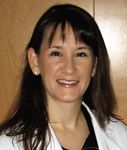Article
Staff huddles boost communication, teamwork
One university-affiliated family medicine residency clinic is attempting to implement elements of the patient-centered medical home.

Key Points

Other things merit improvement. One thing that is inherently challenging in residency clinics is communication among the healthcare team. All the physicians are "part-time," spending other parts of the day in clinical rotations. All the physicians are on steep learning curves and are still trying to master the basics of a busy outpatient clinic. Clinical support staff is not dedicated to a single physician, so it can be challenging to build team-based habits and routines.
One potential solution is the pre-clinic team huddle. We adopted this strategy at the same time our newest intern class started, and the results have been amazing. Within a week of huddling, I no longer could imagine starting a clinic session without it. The residents similarly have voiced their appreciation for the huddles and noted how it has positively affected their clinic sessions. Communication between medical assistants and nurses, nurses and providers, providers and medical assistants, and nurses and front desk staff has all improved. Huddles give all the team members a voice. Recently, one of the front desk staff employees asked whether we anticipated any patients who would need to give a urine sample. "If we know that they will need to give a urine sample when they check in, we can remind them not to use the bathroom," she volunteered. A simple solution to a potentially time-consuming issue. Huddles allow this type of interaction to occur more easily and more readily.
To get started with what felt like a fairly minor change-just getting the clinical team together for a few minutes before the start of the clinic day-we had to make some major changes. The first change was aligning all clinicians' schedules so that start times were uniform. This change meant that some providers were starting earlier and some later than usual. It required changes to nursing staff schedules as well so that medical assistants could be available to put patients in rooms arriving at the same time rather than in a staggered fashion. Our clinic management team committed to the change in schedule that was necessary to make all the team members available for each huddle.
The implementation team (the medical director, clinic manager, assistant clinic manager, and nursing manager) along with attending physicians sought education and how-to guidance on starting the huddles. We visited other practice sites that conducted patient care huddles. We took advantage of a Web seminar hosted by the Wisconsin Academy of Family Physicians on patient care team meetings and huddles. We read about other clinics' experiences, although the literature is limited.
COMMUNICATION CHALLENGE
Communicating about change is a constant challenge despite the presence of email, bulletin boards, and all-staff meetings. Therefore, we used multiple formats to communicate this practice change. Whenever possible, we tried to introduce the idea in meetings that provided an opportunity for questions and dialogue. Where that was not possible, we relied on email descriptions of the huddle along with a link to a YouTube video that depicts a sample patient care huddle ( http://youtube.com/watch?v=Wttxm7jAnb4). We also used a templated form to communicate the how, why, when, where, and what of the planned change. Finally, the nursing manager and medical director demonstrated a sample huddle so that physicians could observe what they could expect. The YouTube video was particularly helpful because it caught people's interest, demonstrated the concept in action, and was easy to share. One of the nurses watched the video and immediately declared, "Now I get it."





